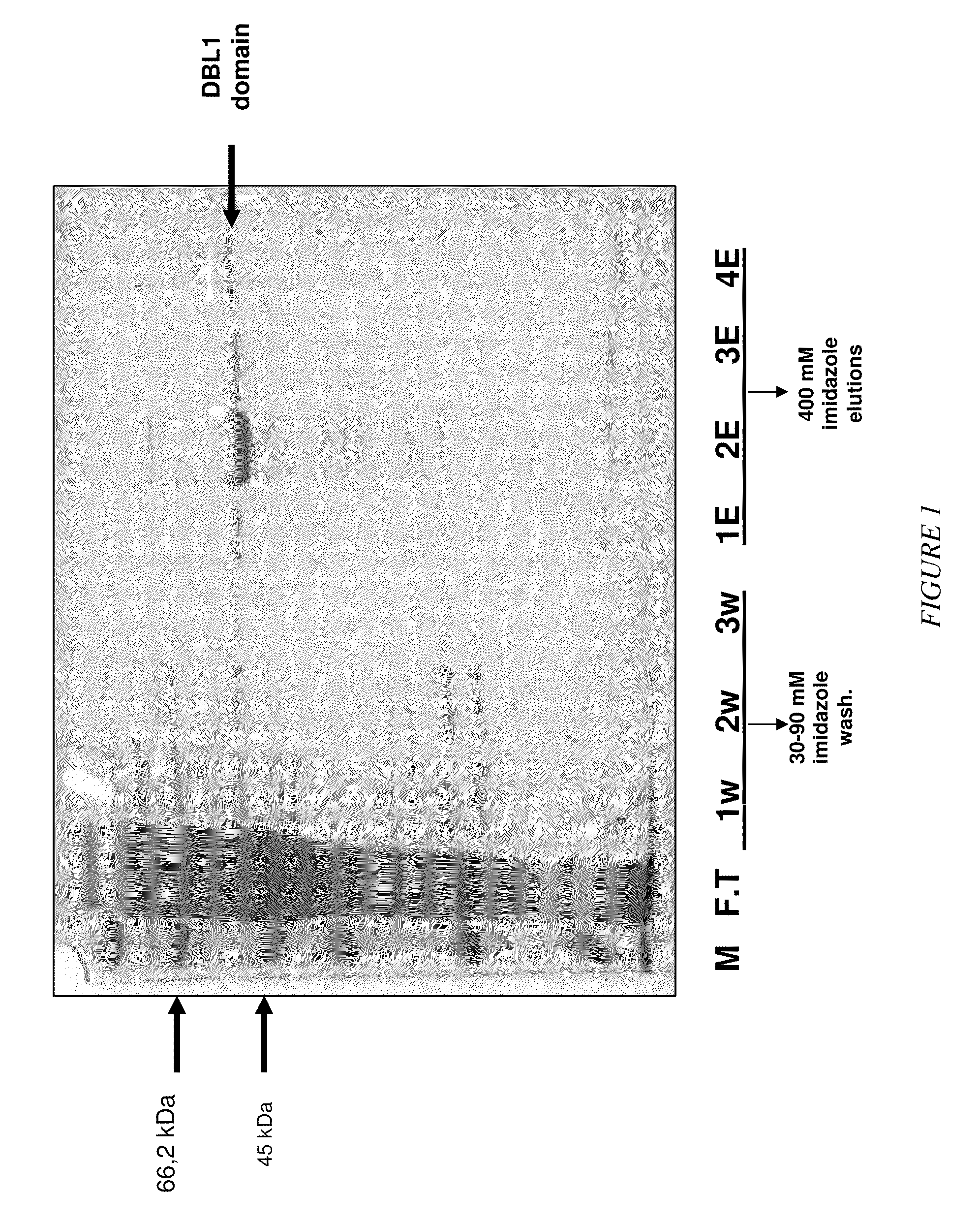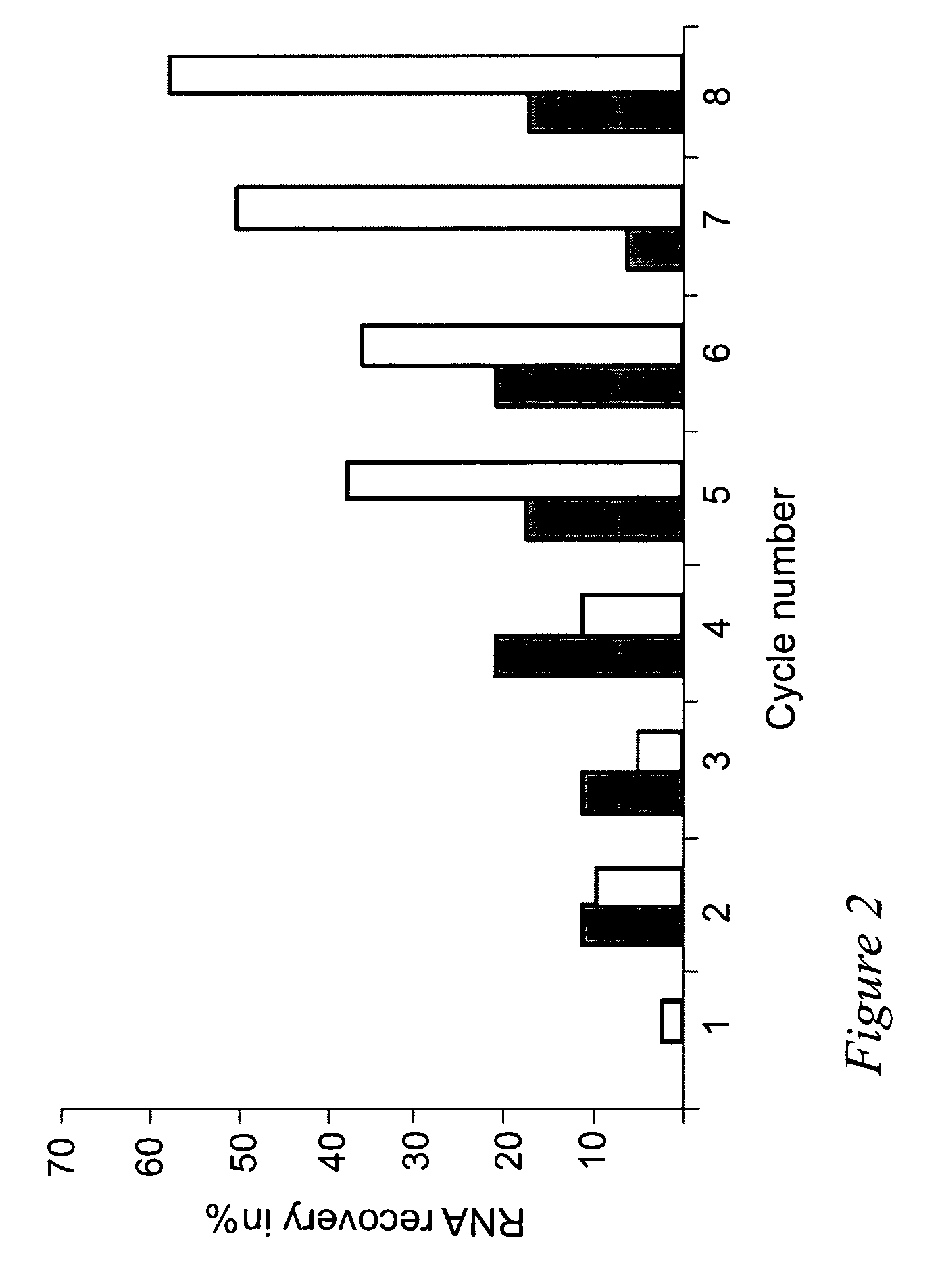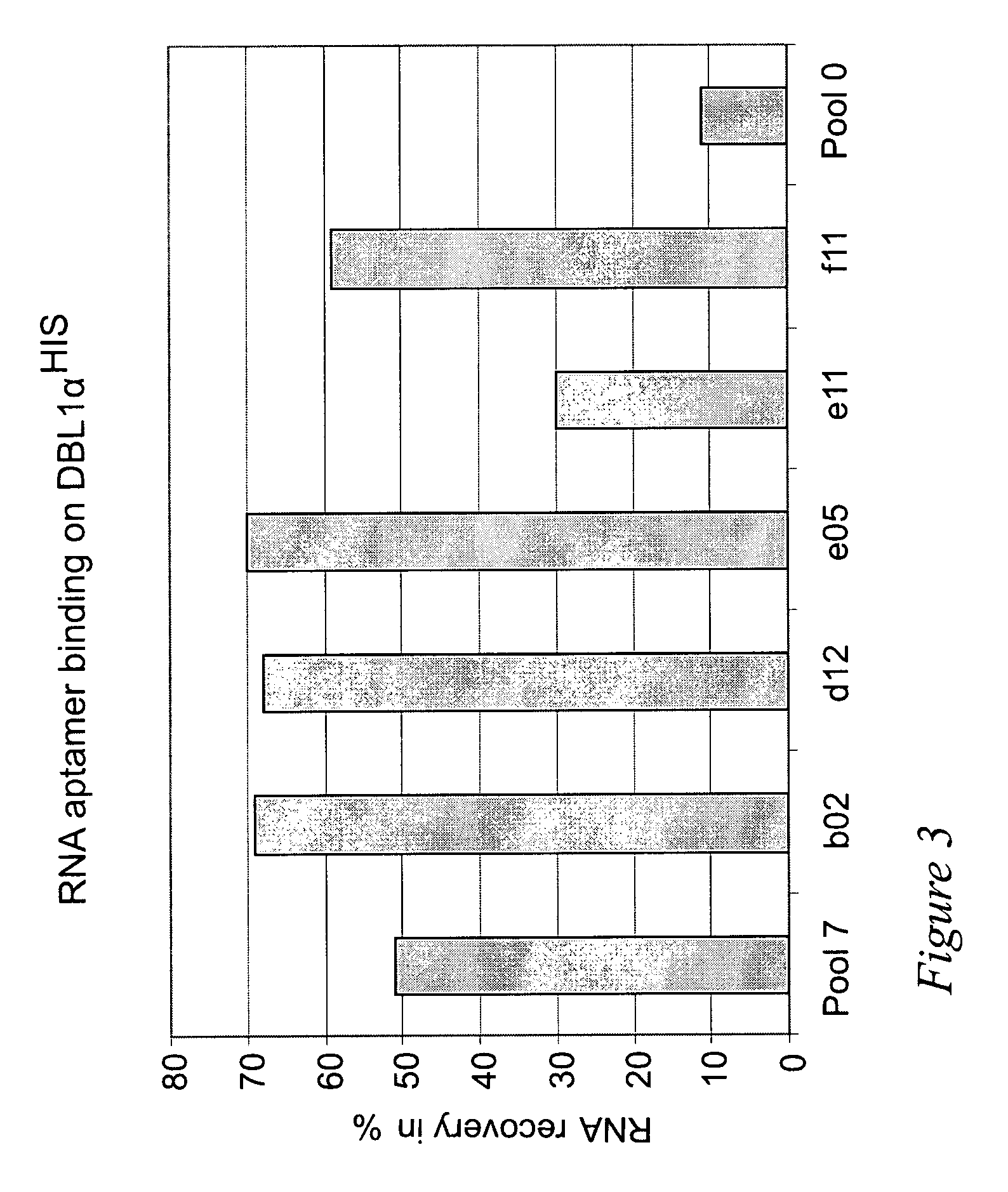Selection of RNA-aptamers as anti-malaria agents
a technology of aptamers and antimalaria, applied in the field of rna-, can solve the problems of limiting the availability of some biologies, scalability and cost, and extremely difficult to elicit antibodies to aptamers
- Summary
- Abstract
- Description
- Claims
- Application Information
AI Technical Summary
Benefits of technology
Problems solved by technology
Method used
Image
Examples
Embodiment Construction
[0032]In particular the present invention relates to certain RNA-aptamers raised against the semi-conserved duffy binding ligand domain 1α, DBL1α, region of the Plasmodium falciparum erythrocyte membrane protein 1, PfEMP1.
[0033]In a preferred embodiment thereof the invention relates to an aptamer selected from the group consisting of
[0034]
(SEQ ID NO: 1)UGCCAACCUUCGAUGCAAGAUAAUACUUUUGAUGGUGUAGUCGUAUUGUU(SEQ ID NO: 2)UCAUGUGCCAGUGUUUGAAAAAACGCGUUGAUUGCUGGUGUGGUGAGCUAGU,(SEQ ID NO: 3)CUUCGAACGGCCCUGGUUGUUGGUUUUAAUUCAUUUAUCCGCGUGGUCACGGU,(SEQ ID NO: 4)UAGCUCACCACACCAGCAAUCAACGCGUUUUUUCAAACACUGGCACAUGA(SEQ ID NO: 5)AACAAUACGACUACACCAUCAAAAGUAUUAUCUUGCAUCGAAGGUUGGCA,and(SEQ ID NO: 6)GUGACCACGCGGAUAAAUGAAUCAAAAACAACAACCAGGGCCGUUCGACUACGCUAAUUAUCCCG
or an active fragment thereof.
[0035]In a preferred embodiment thereof the invention relates to an aptamer having the sequence
[0036]
GACUGAUUACGCCAGCUUGG(SEQ ID NO: 23)orGACFUFGAUFUFACFGCFCFAGCFUFUFGG(SEQ ID NO: 24)
[0037]In a further preferred embo...
PUM
 Login to View More
Login to View More Abstract
Description
Claims
Application Information
 Login to View More
Login to View More - R&D
- Intellectual Property
- Life Sciences
- Materials
- Tech Scout
- Unparalleled Data Quality
- Higher Quality Content
- 60% Fewer Hallucinations
Browse by: Latest US Patents, China's latest patents, Technical Efficacy Thesaurus, Application Domain, Technology Topic, Popular Technical Reports.
© 2025 PatSnap. All rights reserved.Legal|Privacy policy|Modern Slavery Act Transparency Statement|Sitemap|About US| Contact US: help@patsnap.com



